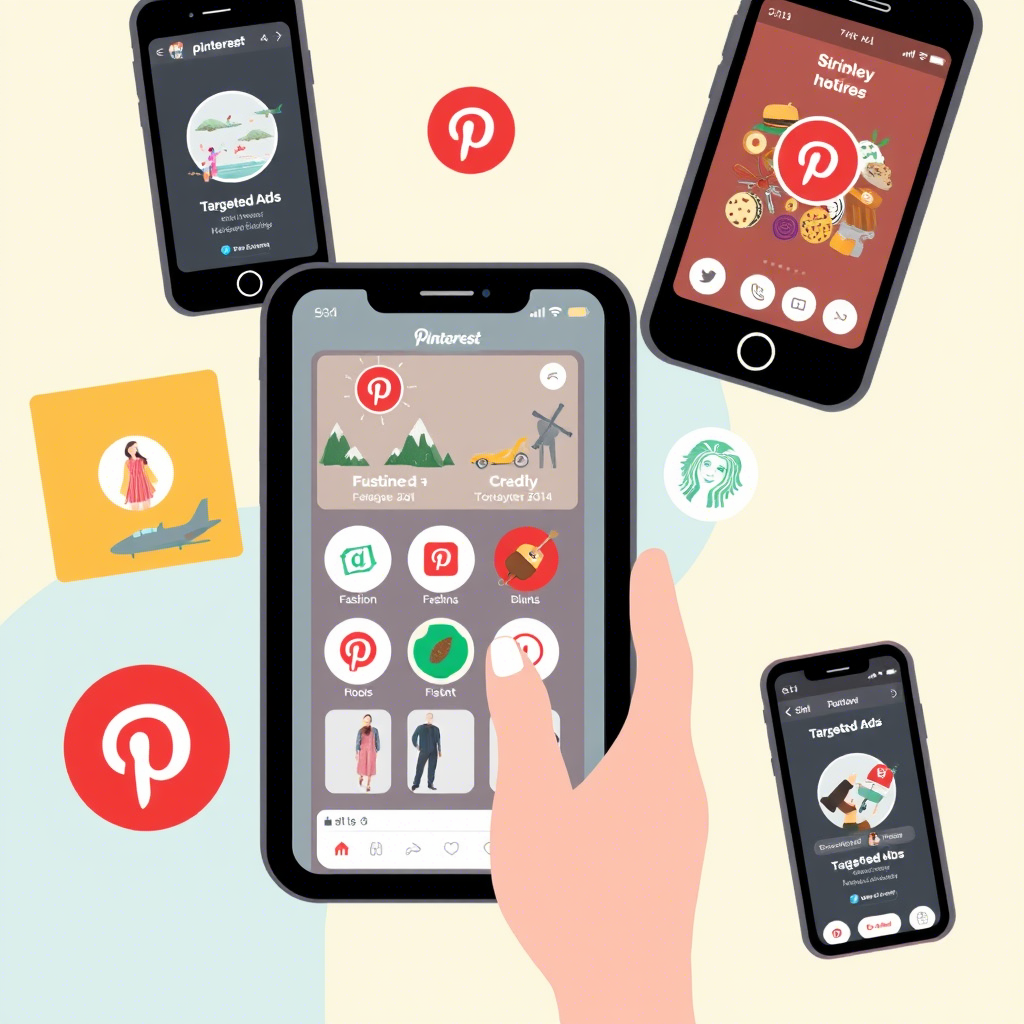Did you know that over 465 million people use Pinterest every month to discover new ideas, products, and inspiration? More than just a place for DIY projects or wedding boards, Pinterest has evolved into a powerful visual search engine — and a goldmine for advertisers.
Whether you’re a small business owner, an e-commerce brand, or a creative entrepreneur, Pinterest Ads offer a unique opportunity to connect with highly engaged users based on their interests, behaviors, and intent. Unlike other platforms where ads can feel intrusive, Pinterest users are actively searching for things to buy, make, or try — making them more likely to convert.
In this article, we’ll walk through how you can leverage Pinterest Ads to target specific demographics and interests with precision. From understanding your audience to crafting compelling visuals and optimizing campaigns, we’ll break down the process step by step.
By the end of this guide, you’ll have a clear strategy to reach the right people at the right time — and turn casual browsers into loyal customers.
Let’s dive in!
1. Understanding Your Audience on Pinterest
Before launching any ad campaign, it’s crucial to understand who you’re trying to reach. Pinterest users are diverse, but they share one thing in common: they come to the platform with intent. Whether they’re looking for fashion inspiration, home decor ideas, recipes, or travel tips, they’re actively seeking solutions — which is why targeting the right audience matters so much.
Demographics play a key role here. Did you know that 80% of weekly Pinterest users in the U.S. are women , and the majority fall between the ages of 25 and 54? However, the platform is also growing among men and younger audiences, especially for topics like tech, fitness, and finance.
To get started:
- Use Pinterest Analytics to see who’s engaging with your content.
- Look at your existing followers’ age, gender, location, and device usage.
- Analyze popular pins in your niche to identify trends.
Once you have a clearer picture of your current audience, you can build lookalike audiences or create custom segments based on similar characteristics. This foundation will help ensure your ads reach people who are most likely to care about what you offer.
2. Leveraging Interest-Based Targeting for Smarter Campaigns
One of the standout features of Pinterest Ads is its ability to target users based on their interests and search behavior — not just who they are, but what they want.
Pinterest’s interest categories are broad themes like “Home Décor,” “Beauty & Skincare,” or “Fitness & Wellness.” These aren’t just random tags; they represent real user intent. When someone saves or clicks on a pin related to yoga routines or organic skincare, Pinterest takes note — and that data becomes incredibly valuable for advertisers.
Here’s how to use interest-based targeting effectively:
- Start broad, then refine : Begin with a general interest category and analyze performance before narrowing down.
- Layer with keywords : Combine interests with keyword targeting to capture high-intent searches.
- Use seasonal insights : Pinterest sees spikes in certain interests during holidays or seasons — plan accordingly.
For example, if you sell handmade candles, you might target users interested in “DIY Home Projects” or “Natural Living,” and layer that with keywords like “aromatherapy candles” or “soy candles.”
This approach ensures your message reaches users who are already curious about your niche — increasing relevance and boosting engagement.
3. Creating Audience Segments with Custom Audiences and Lookalikes
Once you’ve identified your ideal demographic and interests, it’s time to get even more precise with audience segmentation using Pinterest’s Custom Audiences and Lookalike Audiences tools.
Custom Audiences let you retarget people who have already interacted with your brand — whether they visited your website, downloaded your app, or saved your pins. It’s a powerful way to stay top-of-mind and bring back potential customers who didn’t convert the first time.
Lookalike Audiences, on the other hand, help you find new users who behave similarly to your best customers. Pinterest analyzes your existing audience data (like email lists or website visitors) and finds people with similar traits across the platform.
Here’s how to implement both:
- Upload customer emails to create a matched audience.
- Install the Pinterest Tag on your site to track conversions and build retargeting lists.
- Create lookalike audiences from your highest-converting segments.
By combining these two strategies, you can run hyper-targeted campaigns that speak directly to both warm leads and promising new prospects — maximizing your ROI and minimizing wasted spend.
4. Crafting Visual Content That Resonates With Your Target Group
Pinterest is a visual platform, so the design of your pins plays a huge role in capturing attention — especially when targeting specific demographics and interests.
A successful Pinterest Ad isn’t just pretty — it’s strategic. The visuals should reflect the style, tone, and preferences of your audience. For example:
- If targeting young parents, use bright colors, clean layouts, and family-friendly imagery.
- For luxury skincare brands, opt for minimalist designs, muted tones, and elegant fonts.
Here are some best practices:
- Vertical format : Pins should be at least 2:3 aspect ratio (e.g., 1000×1500 pixels).
- Text overlay : Include short, punchy text to explain value quickly.
- Brand consistency : Use consistent colors, fonts, and logos to build recognition.
- Call-to-action : Add phrases like “Shop Now,” “Learn How,” or “Get Inspired.”
Also, remember that different audiences respond to different types of content. Run A/B tests with multiple pin variations to see what resonates best with each segment.
The better your visuals align with your audience’s tastes and needs, the higher your click-through rates — and ultimately, your conversions.
5. Measuring Performance and Refining Your Strategy Over Time
Launching a Pinterest Ad campaign is just the beginning. To truly master targeting specific demographics and interests, you need to measure results and continuously optimize .
Pinterest Ads Manager provides detailed analytics, including impressions, clicks, saves, and conversions. Use this data to answer questions like:
- Which audience segments performed best?
- What type of content drove the most engagement?
- Are certain interests driving more traffic than others?
Key metrics to track:
- Click-through rate (CTR) : Shows how compelling your pin is.
- Cost per click (CPC) : Helps manage budget efficiency.
- Conversion rate : Measures how well your landing page delivers.
- Return on ad spend (ROAS) : Reveals profitability.
Based on your findings, adjust your targeting, creatives, or bidding strategy. Maybe one interest group outperforms others — double down on that. Or perhaps a certain age range isn’t converting — consider refining or removing it.
Optimization is an ongoing process, but with regular analysis and tweaks, your campaigns will become more effective — and profitable — over time.
Conclusion
Using Pinterest Ads to target specific demographics and interests isn’t just a marketing tactic — it’s a smart business move. With its highly engaged user base and advanced targeting options, Pinterest gives you the tools to reach the right people at the right moment.
From understanding your audience and leveraging interest-based targeting to creating custom segments and designing eye-catching pins — each step brings you closer to meaningful engagement and measurable results.
But don’t stop there. The power of Pinterest lies in its ability to evolve with your audience. Keep testing, keep learning, and keep refining your strategy to stay ahead of the curve.
Now that you’ve got a solid roadmap, it’s time to take action. Start experimenting with Pinterest Ads today — and see how targeted advertising can transform your brand’s visibility and growth.
Have questions or want to share your own Pinterest success story? Drop a comment below — I’d love to hear from you!
And if you found this guide helpful, don’t forget to pin it for later!




